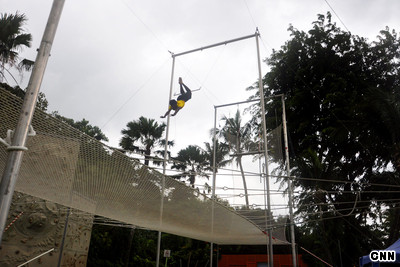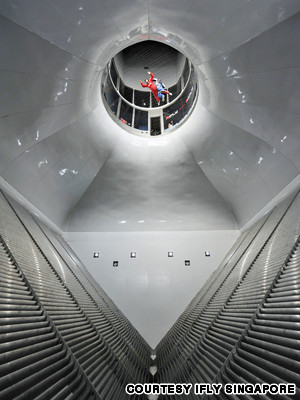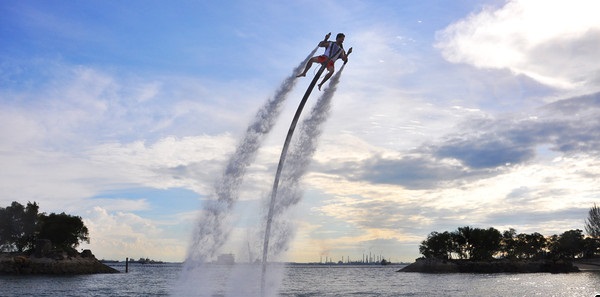What Are Exoplanets And How NASA Detects Life Beyond Our Solar System
Bharti Airtel Set To Acquire Telenor India Within This Year
Google Celebrates NASA’s Discovery Of Seven Earth-Like Planets With An Animated Doodle
Some Home Remedies That Might Sound Bizarre But Actually Work Like A Charm
Akshay Kumar Feels He Has Made Enough Money, Now Wants To Focus On Content & Characters
Delhi ATM Dispenses Fake Rs 2000 Notes From ‘Childrens Bank of India’ With ‘Churan Lable’
Adolf Hitler’s Personal Telephone During World War II Is Up For Auction In The US
From Salman Khan To Rekha, Neil Nitin Mukesh’s Wedding Reception Was Quite A Starry Affair
How to find the biggest thrills in Singapore
CNN Travel's series often carries sponsorship originating from the countries and regions we profile. However, CNN retains full editorial control over all of its reports. Read the policy. Despite being more than four decades old, Singapore's Sentosa Island is a tourist attraction that knows the importance of reinvention. In recent years, it's become the top destination in the city for those in need of a fast adrenaline fix, thanks to a huge cluster of adventure activities, from surfing to indoor skydiving. It also presents a great opportunity for someone like me -- fainthearted, petrified of heights -- to conquer their fears. I recently spent a weekend on Sentosa doing just that -- or trying to -- on the scariest thrill rides and adventures I could find. To gauge my terror during each exercise, I slapped on a Polar FT7 heart rate monitor watch during the trip. I also devised an ad hoc "nausea level" rating. These are my normal heart rate readings. Average resting heart rate: 77 bpm (beats per minute) Maximum resting heart rate: 87 bpm Average nausea level: 0/5 (though certain movies and TV shows can push that to 2/5) More on CNN: Best new restaurants in Singapore
Flying Trapeze
If you've ever had fantasies about flying through the air with the greatest of ease, Fly Trapeze by Sentosa's Siloso Beach can make it happen.
After basic instruction, visitors climb right up to the highest platform.
"When I say 'ready,' you hop," said the instructor.
After you master the basic swing, you need to lift your legs up and hook them onto the bar, so you can let your hands go and swing upside down.
I sought advice from fellow acrobats after my first failure.
"The most difficult part is to lift your legs up," said Nuala Goggins from Ireland. "Timing is really important, so you have to listen to the instructions."
Her compatriot Vicky Reynolds added, "It's a kick, then squeeze your stomach to lift your legs up."
Conclusion: Listen to their advice -- I managed to do it the second time.
Average heart rate: 127 bpm
Maximum heart rate: 174 bpm
Nausea level: 2/5

iFly Singapore
"I never thought I could fly for a living until I saw a hiring notice from iFly Singapore in 2010," says Joshua Tay, one of the instructors at iFly Singapore. "I quit my job right away to join."
iFly Singapore launched in May 2011.
With a height of about 17 meters and a width of five meters, it's the world's largest indoor skydiving simulator.
The wind tunnel can accommodate 20 professional flyers at one time.
There are four fans in the tunnel generating airspeeds of up to 300 kilometers per hour. But, according to iFly Singapore, usual body-flight speeds range from 160 to 190 kilometers per hour.
It looks easy, but striking the right balance is challenging.
"It's actually more difficult than skydiving outdoors, because you're confined in the tunnel," said Tay. "The first time I skydived for real [after training with iFly Singapore], I was flying better than many seasoned flyers."
The first two flights are mostly about learning to balance.
Once you've mastered that, an instructor will help you catch enough wind to soar up to nine meters, offering a great way to experience the weightlessness of free falling.
Conclusion: This is the best way to train before jumping out of a plane.
Average heart rate: 96 bpm
Maximum heart rate: 116 bpm
Nausea level: 1/5






